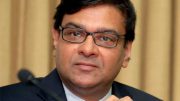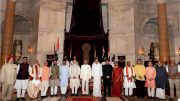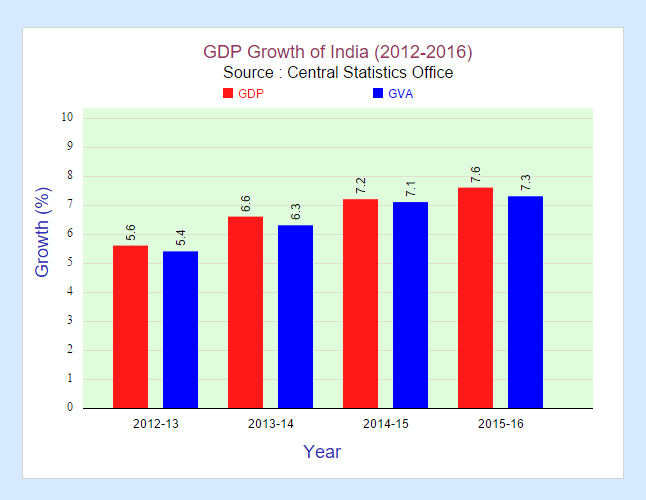Prime Minister Narendra Modi Monday launched a nationwide electrification scheme, the Pradhan Mantri Sahaj Bijli Har Ghar Yojana ‘Saubhagya’ scheme that aims to provide electricity connections to “all willing households” across both urban and rural areas.
The scheme has an outlay of Rs 16,320 crore and is estimated to cover over 40 million families which still lack an electricity connection by December 2018.
“Rs 16,000 crore will be spent to bring a monumental change in the lives of the poor,” Modi said while launching the scheme here today. The Prime Minister said that he regretted that even after 70 years of Independence, 40 million out of 172 million families still lacked access to power.
Niti Aayog member
Alongside the electrification push, Modi also announced the constitution of a five-member Economic Advisory Council to the Prime Minister (EAC-PM) under the chairmanship of Bibek Debroy, member Niti Aayog, in an effort to drive ideas to give a fillip to the economy.
The EAC-PM is an independent body that would give advice on economic and related issues to the Government, specifically to the Prime Minister. The other four members in the committee include part-time members — economists Surjit Bhalla, Rathin Roy and Ashima Goyal along with Ratan Watal, principal advisor, Niti Aayog as the member secretary.
According to latest Central government data, nearly all villages in the country — or 99.5 per cent of them, to be precise — have been electrified.
But as per data provided to the Centre by the states, out of approximately 172 million rural households across the 29 states of the country, more than 40 million are without any access to electricity. This is largely because of the loosely worded definition of electrification which does not focus on household electrification.
“It is extremely sad that electricity has not reached 4 crore households in our country. At those households, people are still lighting candles and lantern. In these crores of households, children find it very difficult to study. Even if they study, it is under the lantern’s light,” Modi said.
Under Saubhagya scheme, states and union territories would be required to complete the “works of household electrification” by December 31, 2018.
The beneficiaries for free-electricity connections would be identified using the socio-economic caste census (SECC) 2011. “However, un-electrified households not covered under the SECC data would also be provided electricity connections under the scheme on payment of Rs 500 which shall be recovered by DISCOMs (distribution companies) in 10 instalments through electricity bill,” the government said in a statement. The Rural Electrification Corporation (REC) Limited will be the nodal agency for operating this scheme throughout the country.
Currently, as per the rural electrification scheme already in place, any household that is below poverty line (BPL) is eligible to get free electricity connection from the state government. Since 2014, the Central government has been working on a “24X7 Power for All” program, which aims at delivering “access to reliable and quality power supply to all citizens/ establishments by 2019”.
The Saubhagya scheme
The Central government signed a “24X7 Power for All roadmap” with every state government and union territory. According to government officials, the PFA Program has benefited several states in addressing funding gap for investments required to ensure 24×7 power access to all.
The total outlay of the Saubhagya scheme is Rs 16,320 crore while the Gross Budgetary Support (GBS) is of Rs 12,320 crore. For the rural households and urban households, the total outlay is Rs 14, 025 crore and Rs 2, 295 crore, respectively. “The Government of India will largely provide the funds for the scheme to all states and union territories,” the statement said on Monday.
Under Saubhagya, the Centre will also provide solar power packs of 200 to 300 watt-peak (Wp), along with battery bank, for un-electrified households located in remote and inaccessible areas. This solar pack will include five LED lights, one DC fan and one DC power plug. “The last mile connectivity has always been a challenge, with households facing high connections costs, and states facing higher supply costs. So, this attempt to address both, by funding energy efficient equipment, is a positive step,” said Kameswara Rao, Leader, Energy, Utilities and Mining, PwC India.
Mobile app for electricity connection
The Centre will use a mobile app for easy and accelerated implementation — identification of beneficiaries and their application for electricity connection, with their photos and identity proof, will be registered on the spot through this app. “The gram panchayats/public institutions in the rural areas may be authorised to collect application forms…distribute bills and collect revenue in consultation with the panchayati raj institutions and urban local bodies,” the government stated.
Currently, as per the Centre’s 2006 rural electrification policy, a village is deemed “electrified” if basic infrastructure such as distribution transformer and distribution lines have been set up in the inhabited locality, including a “Dalit basti.”
Moreover, at least 10 per cent of the households of such a village should have access to electricity through the basic infrastructure established. Nowhere does the definition talk about actual electricity connection or its supply to the household.
This is why 99.5 per cent villages in the country have been deemed “electrified” even though more than 40 million rural households are without electricity connections.





Be the first to comment on "Rs 16,320-crore outlay: PM Modi launches power plug-in for last mile"